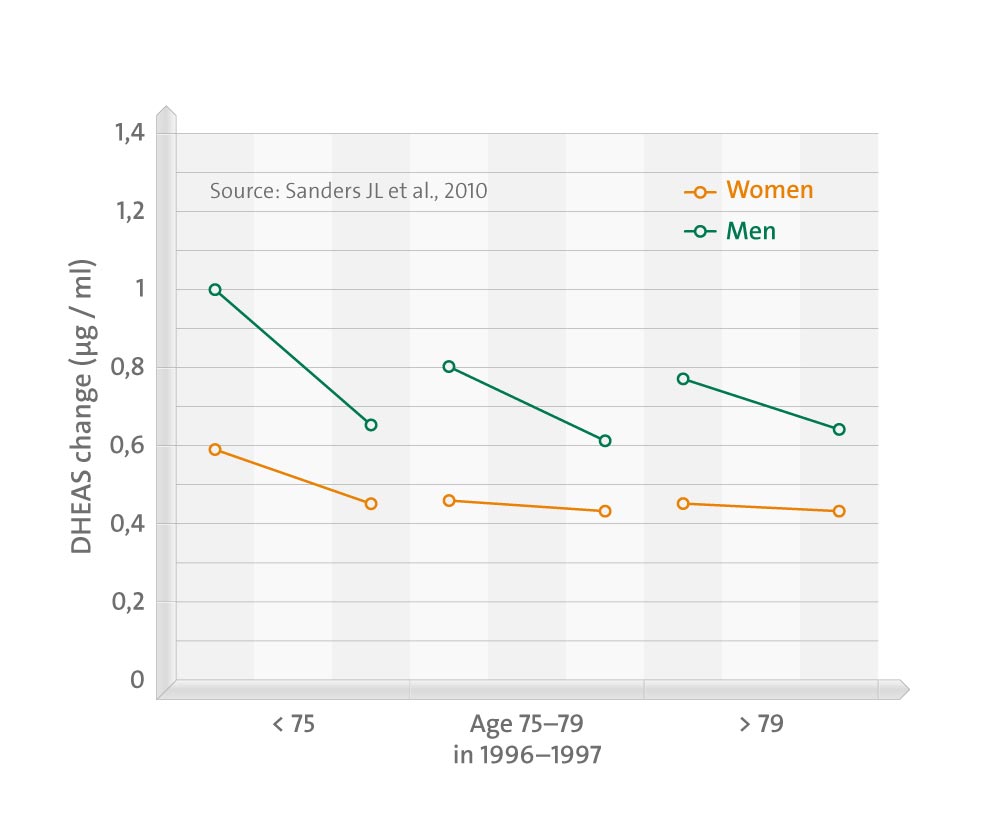Objectives
To describe cross-sectional and longitudinal associations with dehydroepiandrosterone sulfate (DHEAS) and change in DHEAS with age.
Design
Longitudinal cohort study.
Setting
Pittsburgh, Pennsylvania.
Participants
Cardiovascular Health Study All Stars study participants assessed in 2005/06 (N=989, mean age 85.2, 63.5% women, 16.5% African American).
Measurements
Health characteristics were assessed in 2005/06 according to DHEAS level, mean DHEAS and DHEAS change across age categories were tested, and linear and logistic regression was used to identify factors present in 1996/97 associated with continuous and categorical DHEAS change.
Results
Mean +/- standard deviation DHEAS was 0.555 +/- 0.414 microg/mL in 1996/97 and 0.482 +/- 0.449 microg/mL in 2005/06 for women and 0.845 +/- 0.520 microg/mL in 1996/97 and 0.658 +/- 0.516 microg/mL in 2005/06 for men. In 2005/06, DHEAS was lower in women and subjects with cardiovascular disease (CVD) and chronic pulmonary disease and higher for African Americans and subjects with hypertension and high cholesterol. Mean DHEAS change was greater in men (-0.200 microg/mL) than in women (-0.078 microg/mL) (P<.001). Each 1-year increase in age attenuated the effect of male sex by 0.01 microg/mL (P=.009), abolishing the sex difference in DHEAS change by age 79. Presence of CVD before the study period was associated with greater absolute DHEAS change (beta=-0.04 microg/mL, P=.04) and with the fourth quartile of DHEAS change versus the first to third quartiles (odds ratio=1.46, 95% confidence interval=1.03-2.05).
Conclusion
DHEAS change continues into very old age, is not homogenous, is affected by sex, and is associated with prevalent CVD. Future studies should investigate factors that might accelerate DHEAS decline.
